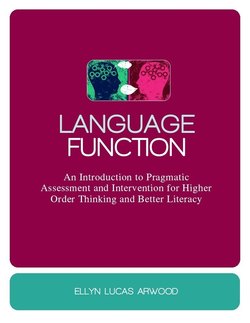Описание книги
Literacy teaching tends to take a structural approach to language, focusing on auditory products or skills such as sounds, morphemes, words, sentences, and vocabulary. However, new research suggests that the majority of English speakers actually think and learn in visual concepts, and that there is a cultural and linguistic mismatch between auditory teaching methods and the way students think and learn. This has important implications for all educators including those who work with students with neurogenic disabilities, such as autism spectrum disorders and ADHD. In her new book, Dr. Ellyn Lucas Arwood outlines a revolutionary four-tiered model of how a learner acquires language, and suggests ways to impose visual language functions onto an auditory language like English in order to improve learning for both neurotypical learners and those with neurogenic disabilities. Dr. Arwood provides tried-and-tested intervention strategies that work with all levels of ability, giving readers the knowledge and confidence to teach learners to become more literate in a way that raises learners' abilities to think and problem solve. This book takes a fresh look at how language and literacy interact, and will be of interest to educators and special educators, speech and language pathologists, and other professionals who support language learning and development.
